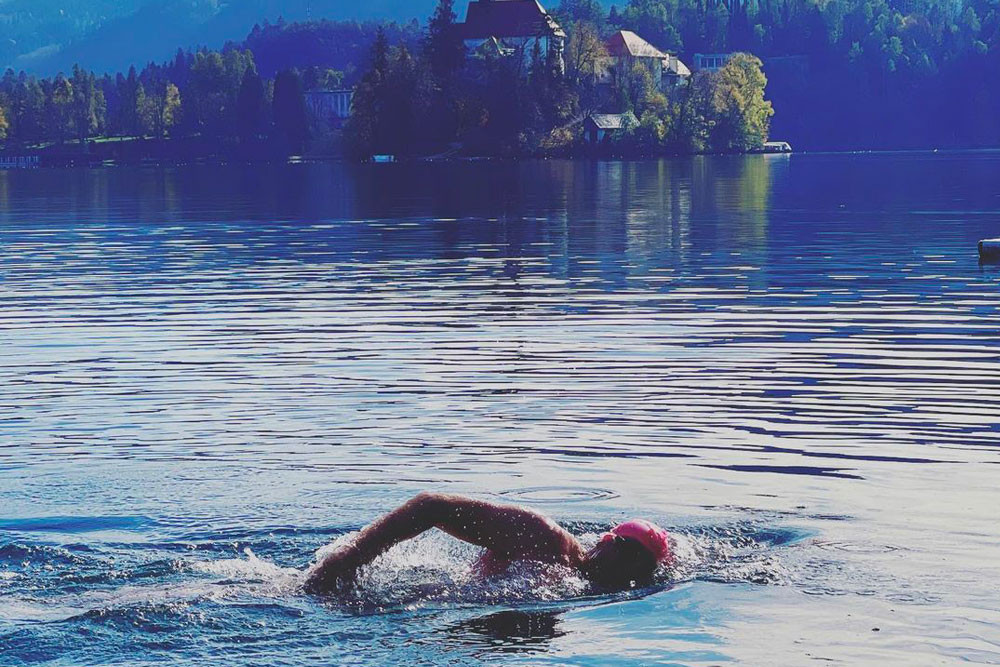The call of the cold
From fighting dementia and depression to boosting our immune systems, there’s a growing body of evidence that cold water swimming isn’t just good fun – it might also be good for our health.
We spoke to swim coach Colin Hill about plucking up the courage to plunge. And the good news? Wetsuits are 100% allowed – positively encouraged, in fact, aided by a partnership with C-Skins’ Swim Research…
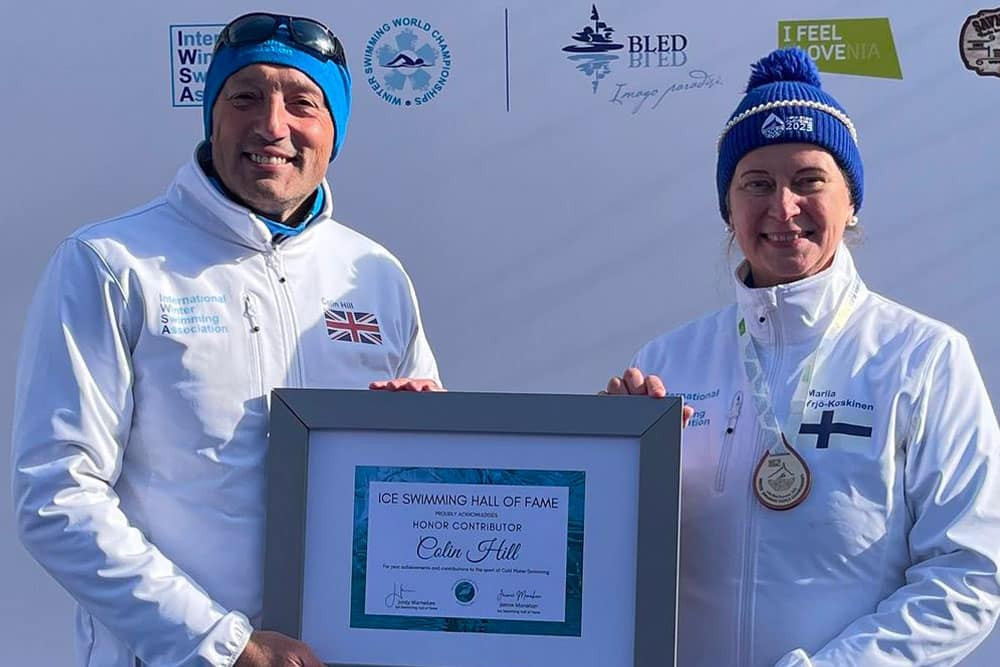
Cold water swimming in Ullswater
In the depths of winter, swimming is probably the last thing on most people’s minds. But for Colin Hill, it’s business as usual. Summer or winter, dark or light, rain or shine, he’ll be out leading guided swims across Ullswater – and championing the virtues of cold water swimming.
“I’m passionate about it,” Colin says, fresh from his latest swim session on a crisp winter’s day. “There have been so many studies now that show the therapeutic effect cold water swimming can have – not just for physical fitness, but for mental health and wellbeing too. Recently I read an article in the Daily Telegraph about the beneficial effect it can have for dementia sufferers. We’re just beginning to understand the science, but personally, I have no doubt about the benefits that regular cold water immersion has for the mind and body.”
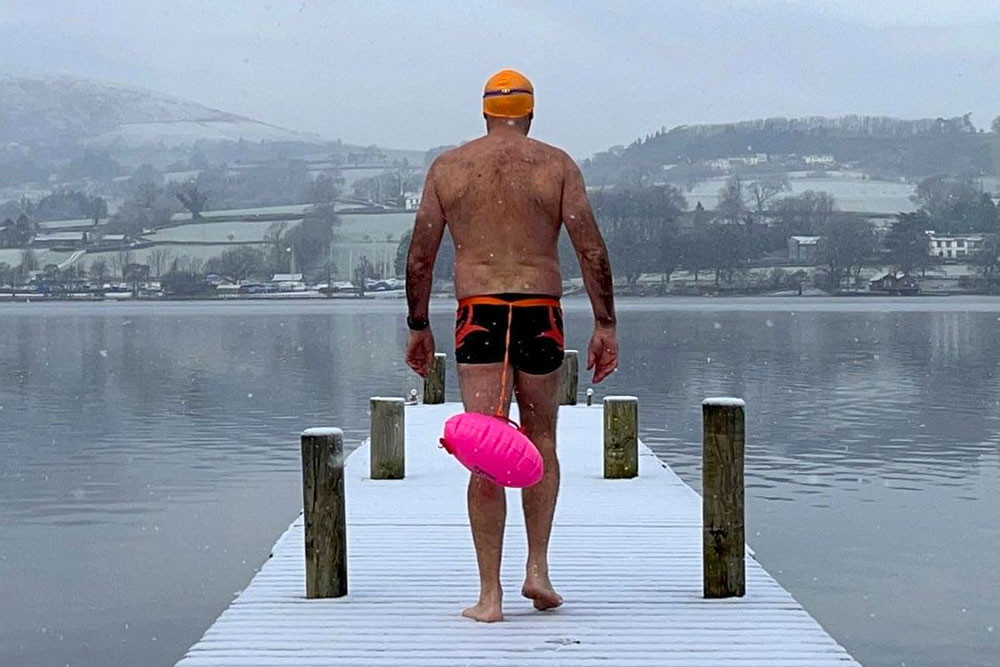
Colin Hill
If anyone should know, it’s Colin. He’s one of the UK’s most high profile cold water swimmers, with experience gathered in locations all over the world – from high-altitude swims in the Alps to sub-zero races in Siberia and Murmansk, and the Marathon Swimming event at the London 2012 Olympics.
Colin has not only been inducted into the International Marathon Swimming Hall of Fame and in 2023 the International Ice Swimming Hall of Fame for his ‘Contribution to the sport’. We are extremely lucky at Another Place to have him on our team as our open water swim guide, taking out lessons nearly everyday from our jetty.
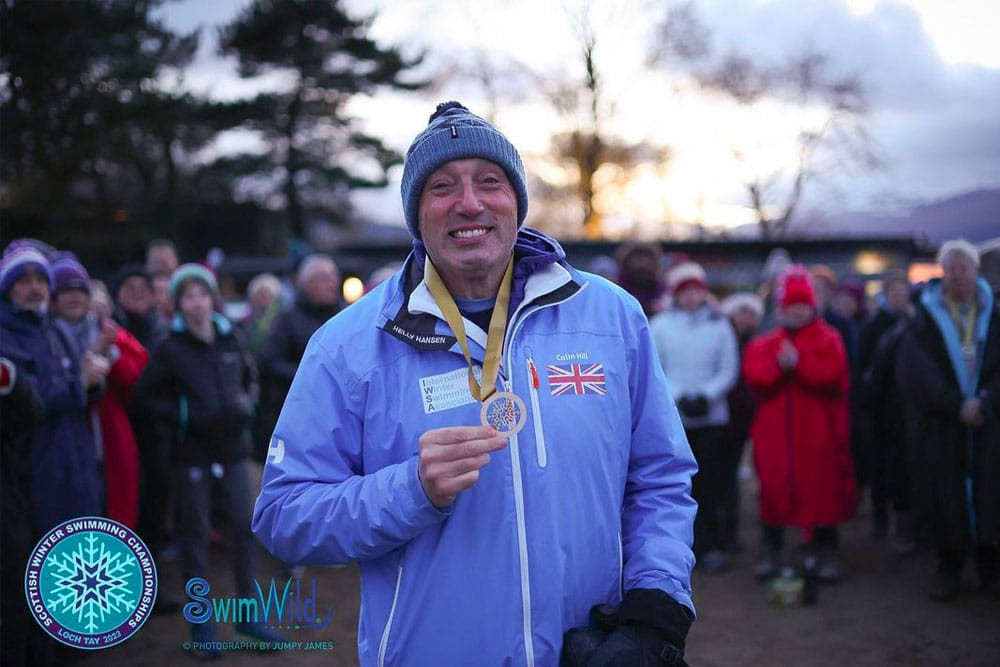
2024 and beyond
2023 was one of Colin’s best years for cold water competitions. In January he came 2nd overall at the IWSA World Championships in Lake Bled, Slovenia for the 1km (14 min 48 sec) and world champion for his age group. In February he attended the Scottish Winter Swimming Championships and won the 450m. In 2024 Colin continued his medal haul and managed to win 3 medals at the Winter Swimming World Championships in the freezing Baltic Waters in Estonia.
He was the first UK Male to swim an Ice Mile in 2013 (one mile in under 5 degrees with no wetsuit) and has been World Winter Swimming Champion at 450 meters (Lativa) and finished 3rd at in the 1km International Winter Swimming World Championships in (Slovenia).
Colin was winter swimming a long time before it gained popularity (his first International Winter Swimming World Championship was in 2008) and he loves passing on his knowledge on cold water, this has included training up Blue Peter Presenters for a winter swim challenge and Jo Whiley for a Sports Relief Challenge.
“The most extreme swim I’ve done was a race in Siberia where the air temperature was -20˚C, and the water was only just above freezing. That was full-on!” he says. “But acclimatisation is everything in cold water swimming.
“Once, I was flown out to Germany by Red Bull, and got wired up as part of a doctors’ study to monitor my blood pressure, heart rate and so on. The temperature was about 1˚C and I lasted about 25 minutes, and felt okay. But there were two alpine climbers there who only managed three minutes and could barely talk afterwards. The difference was my body was used to those conditions. I knew what to expect, and had the techniques to cope with it.”
Now, Colin’s focus is on bringing those techniques and all that experience to Another Place – and helping guests experience the benefits of cold water swimming in a safe and enjoyable way.
“As soon as they get into the water, out into this beautiful, wild lake, surrounded by nature, everyone forgets what they were worried about.”
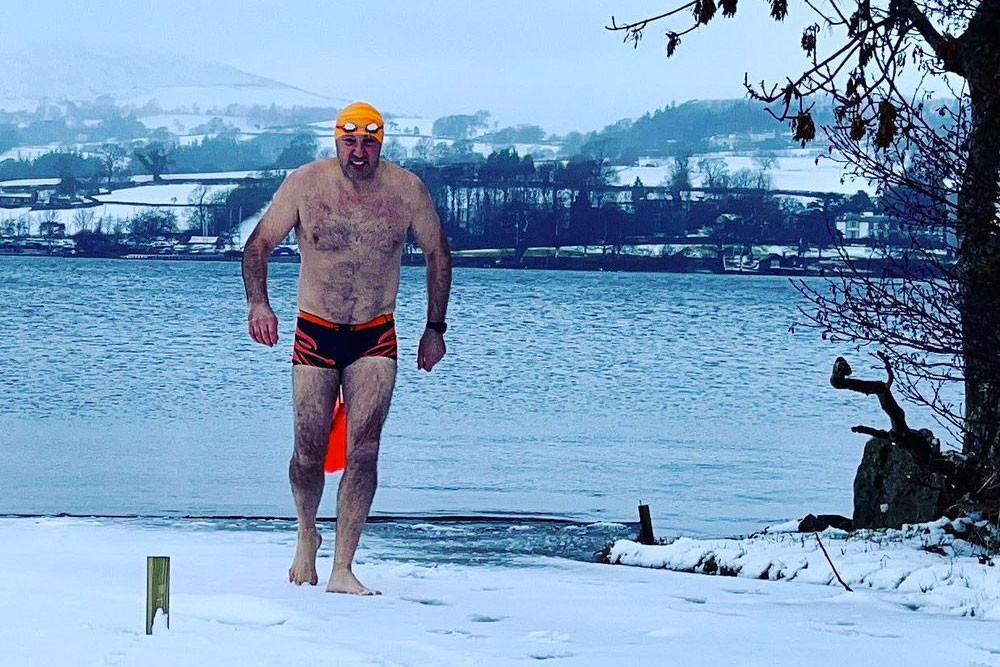
Try cold water swimming
“All our guests want to try it, but they’re often nervous about what it’ll be like. I’ve had people tell me they didn’t get any sleep the night before, worrying about it!” he laughs. “Helping people overcome that initial fear is a part of what my job is about. I always say the anticipation is way worse than the actual swimming! Because I guarantee, as soon as they get into the water, out into this beautiful, wild lake, surrounded by nature, everyone completely forgets what they were worried about. The sense of camaraderie is amazing to watch.”
Colin has led swims for guests of all ages and abilities, and he’s adamant that everyone can benefit, even if they’ve never swum in the wild before. But he does have a few tips to help people get the most out of the experience.
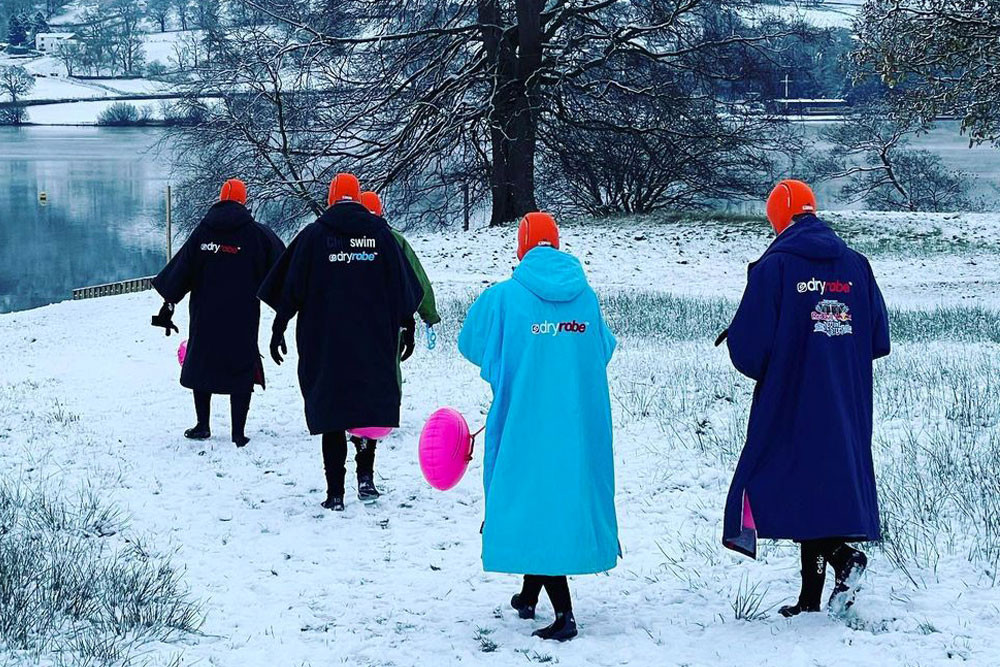
Slow and steady wins the race
“For me, the key is to go in gradually. Initially, we go out to our waists, gradually getting used to the feeling of the water, maybe splashing some on our face, or blowing a few bubbles under the surface. And then we just swim out really gently, usually breaststroke. I ask people not to focus on what they’re feeling, but to look out at the scenery – the autumn leaves, the colour of the fells, the clouds. It helps people immerse themselves in the experience, rather than getting wrapped up in their own sensations. That really helps.”
…And breathe
Another trick Colin has is to regulate your breathing. “One of the main problems people experience is cold water shock. When you’re immersed in cold water suddenly, you have a sudden massive intake of breath, and then struggle to regulate your breathing afterwards. Breathing slowly and steadily is really important: it calms your mind, and keeps blood flowing around the body and out to the extremities.”
“Breathing slowly and steadily is important: it calms your mind, and keeps blood flowing around the body.”

Think ahead
It’s also imperative to think not just about what happens while you’re in the water, but also to make a plan for when you get out.
“Getting dry and warm as quickly as you can is vital,” says Colin. “I like to have all my clothes laid out before I go in. Then once I get out, I can dry myself off quickly and get dressed nice and fast. The Dryrobe changing robes we provide are great for that, and I also recommend Crocs, which stop your feet getting cold. After half an hour or so, once you’re fully warmed up, it’s fine to have a hot drink and a shower – but no sooner than that. You need to warm up gradually.”

Choose your suit
Colin is also sanguine about whether or not people decide to wear wetsuits. “I don’t have any time for that macho anti-wetsuit thing. I’m anti anti-wetsuits, in fact!” he laughs.
“The fact is that having that extra protection helps, especially when you’re new to it. When I swim on my own, I rarely wear a wetsuit, but with guests I nearly always do. Some people find just wearing gloves and swim socks is enough. Everyone should go with what makes them comfortable.”
To enhance guests’ experience, Another Place has recently invested in a fleet of cutting-edge wetsuits made by Swim Research, a sub-brand of the Cornish wetsuit company C-Skins.
“The Swim Research range was specifically designed with recreational swimmers in mind, not just triathletes or surfers,” explains C-Skins director Mark Brown. “We wanted a suit that was flexible and comfortable, but also had the right amount of buoyancy. We use a special material called glideskin that helps you slip through the water, and also adjust the fit and length of the suits to make them better suited to everyday swimmers’ needs.”
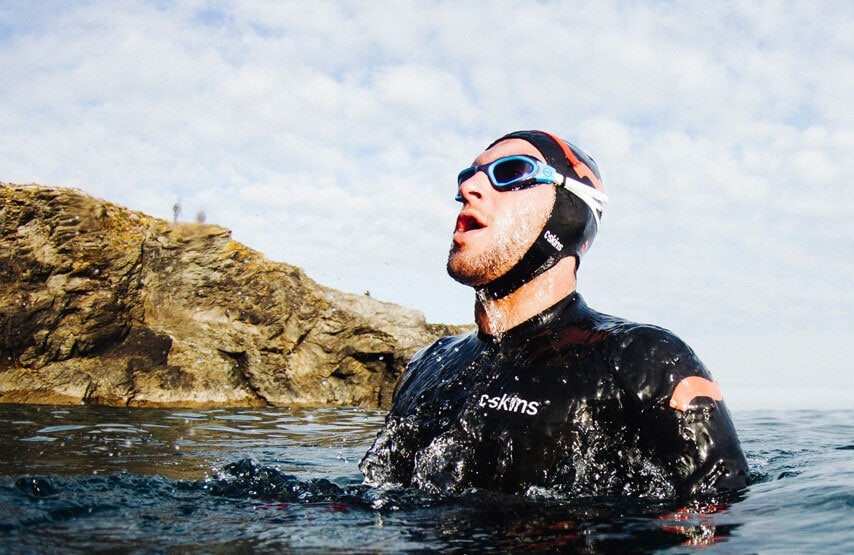
“I don’t have any time for that macho anti-wetsuit thing. I’m anti anti-wetsuits, in fact!”
The suits are also notable for their sustainability credentials. “Moving away from throwaway culture, and creating a more sustainable supply chain, are both really important to us,” Mark explains. “The neoprene in our suits is made from recycled tyres, and we use polyester yarn made from plastic bottles. Overall our suits have a 26% lower carbon footprint than an average wetsuit. Within a few years, I’m confident that we will be producing 100% recyclable products.”
“The Swim Research suits are amazing,” Colin says. “They have just the right amount of flexibility and buoyancy, and they’re so comfortable. They’ve really added to guests’ enjoyment.”
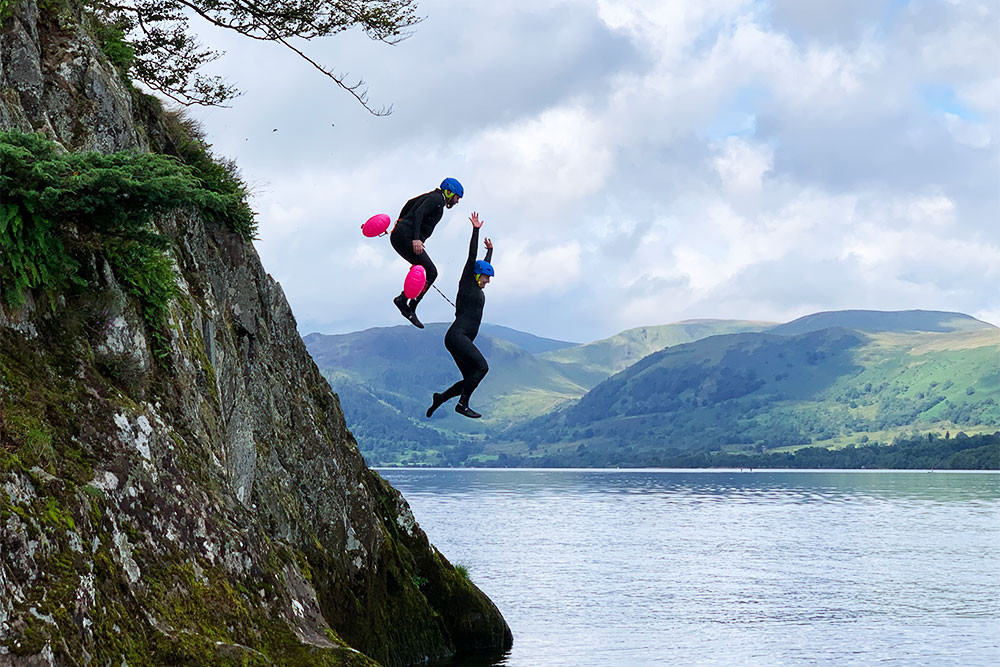
The water in winter
From late October, the temperature in Ullswater is around 11˚C, but it’ll get considerably colder in the months to come. Not that it makes any difference to Colin – he’ll be guiding swims throughout the winter season.
“If you can break the ice, it’s warm enough to swim – that’s what I always say,” Colin laughs. “I’ve had some of my most memorable experiences swimming in winter, when the lake is deserted, and there’s frost on the grass and snow on the fells. Honestly, it doesn’t get much better than that.”
He sips his tea and looks across the lake. “Even if I wasn’t working here, I’d still be out in the water every day,” he says. “I can’t get enough of it. I guess cold water must be in my blood.”
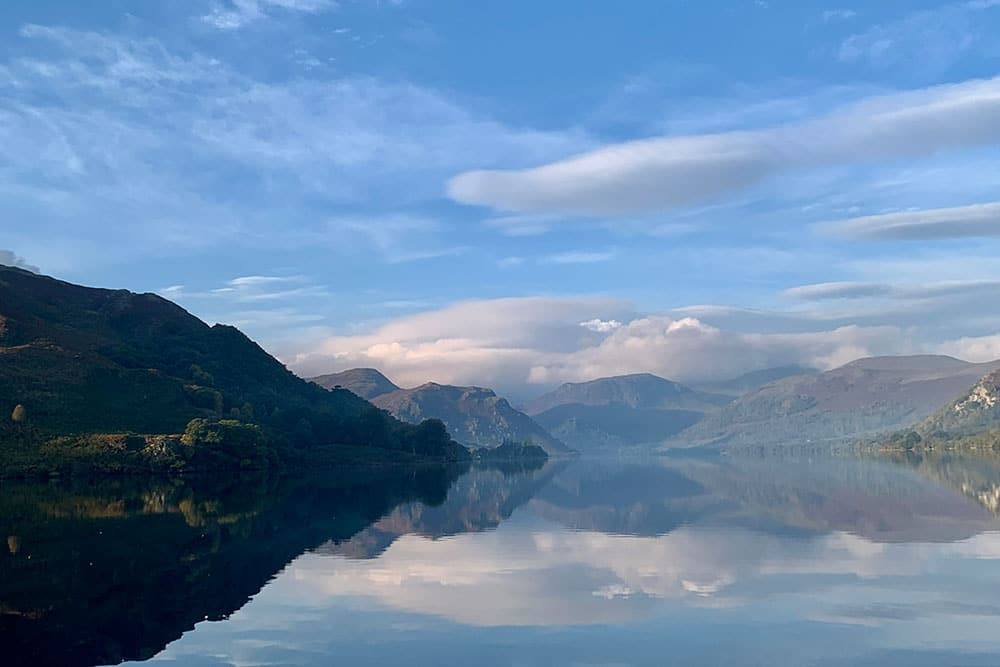
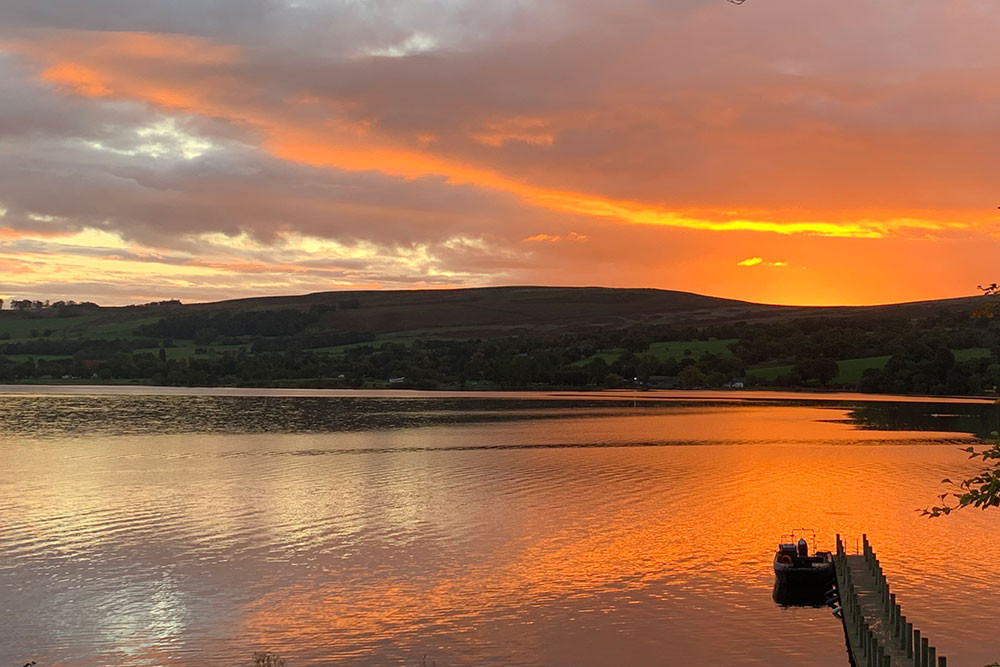
More cold water swimming tips
When deciding how long to swim, a rule of thumb is a minute for every degree under 10˚C (so stay in for 1 minute at 1˚, 10 minutes at 10˚C).
Concentrate on keeping your breathing slow and steady.
Don’t push yourself: swim at a pace and depth you feel comfortable.
Wear a tow-float, which keeps you visible and provides extra support if you need it. At Another Place we use bright pink Swim Secure floats.
Lay out your clothes ready to get dressed quickly once you exit the water.
Once you’re out, dry off as quickly as possible, keep a bit of movement going and put on a warm hat.
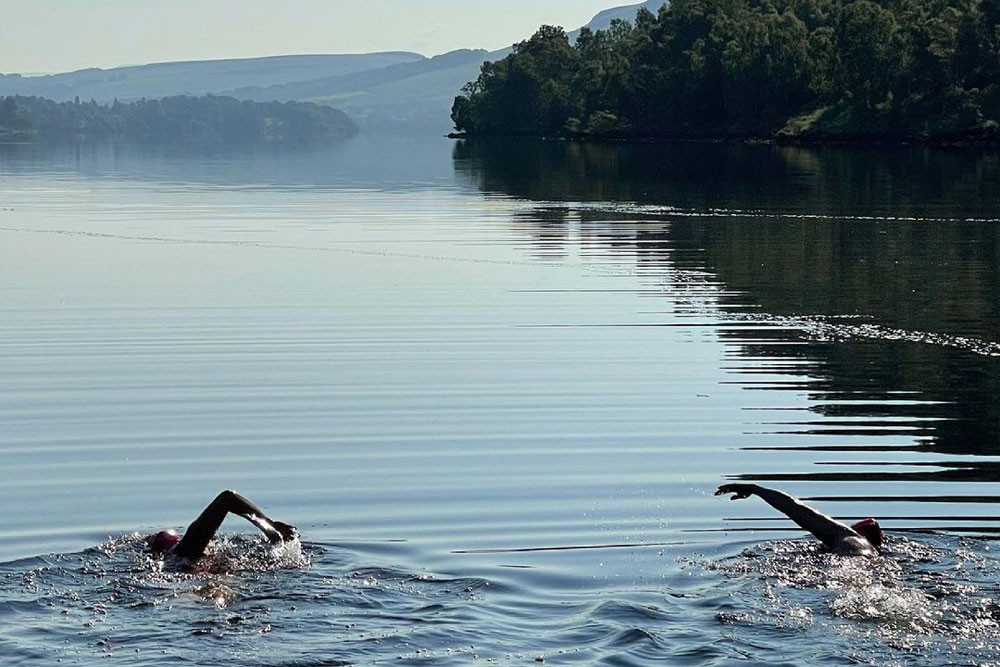
Swimming at Another Place
Colin’s cold water swimming lessons run throughout the year. They range from cross lake front crawl or breast stroke swims to stargazing and full moon night swims, introduction to open water swimming and a wild swim adventure to Kailpot Crag which includes jumping from cliffs.
Book you session online.
If you’re still not convinced about swimming in the lake over the winter, you might want to work on your swimming technique in the (much warmer) endless pool. Book a one-to-one training session with Colin.
Meet Joe Minihane, whose battle with anxiety and discovery of outdoor swimming inspired his book Floating, A Life Regained and the captivating short film Waterlog (which can be watched on this Journal page).


